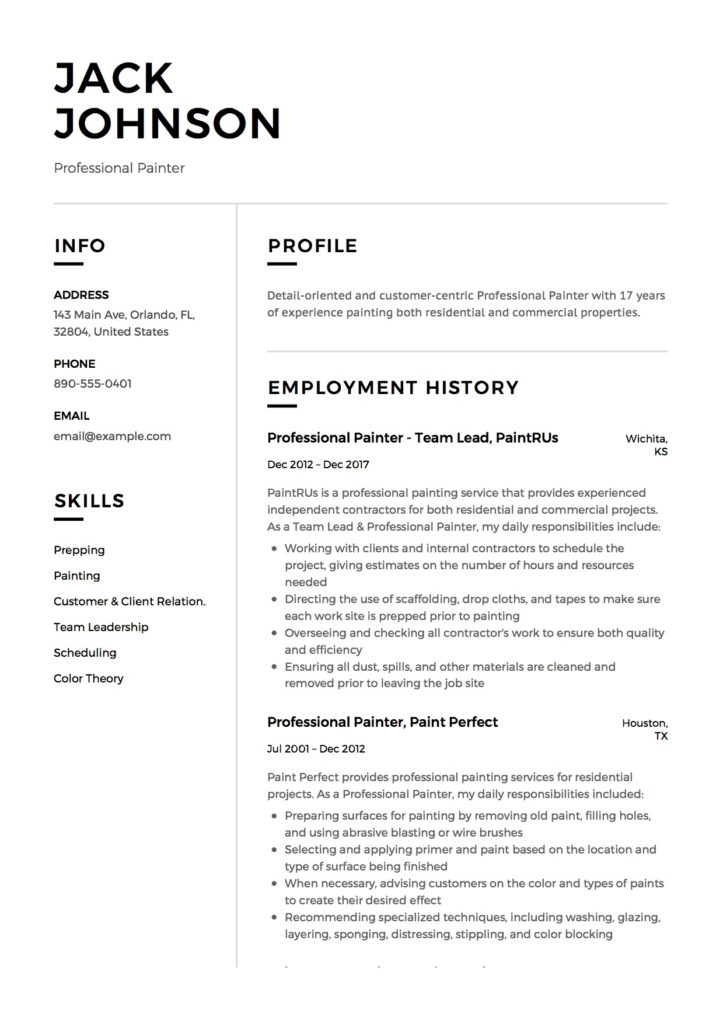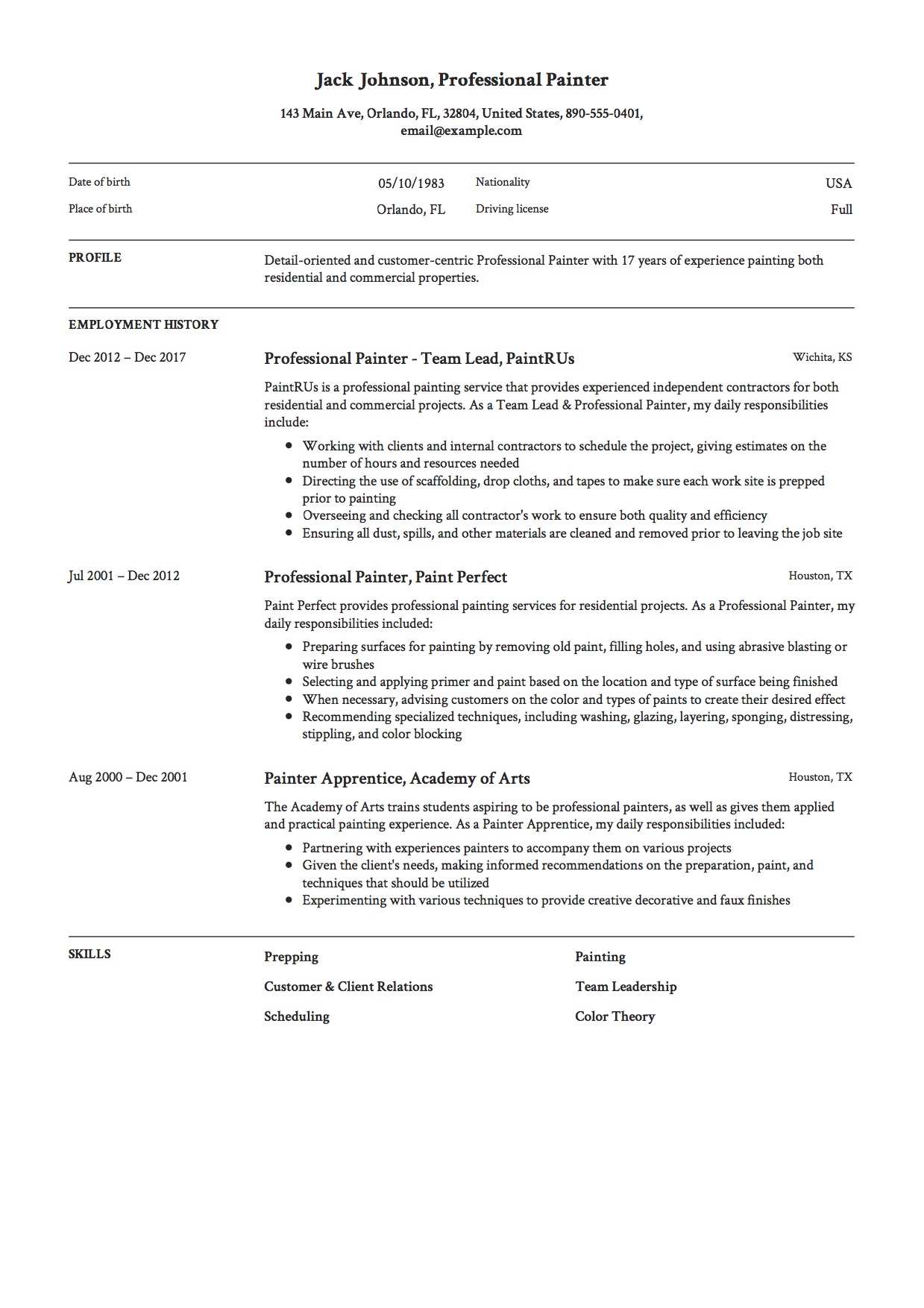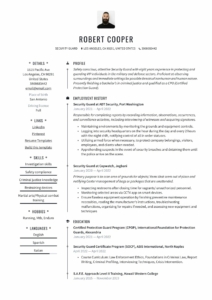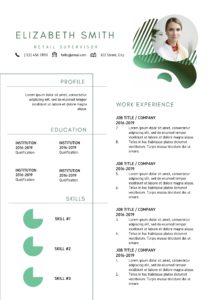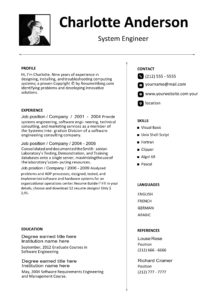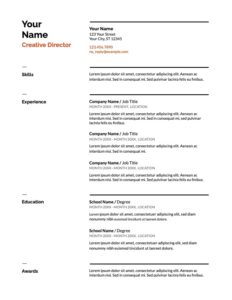Looking for a new Commercial Painting position? To make sure you stand out from your competition, it is important to check out examples of other Painter resumes that proved to be successful.
We show you both the examples and the how-to guide with samples per resume section.
Let's get started!
What you can read in this article
Commercial Painter Resume Examples
Or download these resume examples in PDF at the bottom of this page for free
What to Highlight
No matter how long you have been in your career, there are three key things potential clients and employers will want to see before hiring you to be their Commercial Painter.
#1: Years of Experience:
The first thing employers are looking for is your years of experience, in addition to the type of painting you have done. The two main categories are commercial and residential, but there are a number of subcategories within those areas as well. Within the commercial painting, you could have worked on retail locations, schools, office buildings, or hotels. Within residential, you could have worked on newly built homes or historical residences. Make sure to include this information in both the summary at the top of your resume and under each position description in your employment history.
#2: Employee or Contractor:
The second thing employers are looking for is if you have been a full-time employee of a company or if you typically operate as an independent contractor. As an independent contractor, it is assumed that you are also proficient in marketing, billing, and accounting. Add whether you were a contractor or a full-time employee under each professional experience.
#3: Area of Specialty:
Lastly, employers are interested to see if you have any area of specialty. This could be a type of decorative or faux finish you are skilled at or any sort of techniques and finishes you have perfected, including glazing, layering, sponging, distressing, and stippling.
Professional Painter Resume Guide:
Resume Sections:
Step 1. Contact Information:
- Name
- Address
- Phone Number
Step 2: Objective/Summary Statement (optional)
Write a concise objective or summary statement that highlights your qualifications and career goals as a Commercial Painter. This statement serves as an introduction to grab the employer's attention.
For example:
Objective: Dedicated and skilled Painter with a strong eye for detail and a passion for delivering high-quality work. Seeking a position where I can utilize my expertise in various painting techniques to transform spaces and exceed client expectations.
Step 3: Skills Section
Create a dedicated section to showcase your painting skills and knowledge. Include both technical skills and soft skills that are relevant to the Painter role. For example:
Skills:
- Painting Techniques: Proficient in a variety of painting techniques, including brushwork, roller application, spray painting, faux finishes, and texture painting.
- Surface Preparation: Experienced in preparing surfaces, including sanding, priming, filling holes, and caulking, to ensure a smooth and even paint application.
- Color Mixing: Skilled in color matching and mixing to achieve desired shades and tones.
- Attention to Detail: Meticulous and precise when it comes to achieving clean lines, consistent coverage, and a flawless finish.
- Time Management: Excellent organizational and time management skills to complete projects within deadlines.
- Teamwork: Collaborative and able to work effectively in a team environment, coordinating with other painters and contractors to achieve project goals.
Step 4: Professional Experience
List your work experience in reverse chronological order, starting with your most recent position. Provide an introduction for each position, outlining the company, project types, and your role. Then, use bullet points to highlight your responsibilities and achievements. For example:
Painter, ABC Painting Company
(June 2018 – Present)
- Collaborated with a team of painters on commercial and residential projects, ensuring high-quality paint finishes on various surfaces, including walls, ceilings, trim, and exteriors.
- Prepared surfaces by scraping, sanding, patching, and priming to achieve a smooth and uniform finish.
- Applied paint using brushes, rollers, and spray equipment, consistently delivering precise and even coverage.
- Expertise in specialty finishes, such as faux finishes, glazing, and stenciling, to enhance the aesthetic appeal of spaces.
- Maintained a clean and organized work area, adhering to safety protocols and minimizing disruptions to clients.
Example Responsibilities for your Experience Section
Whether you are just starting your painting career, or if you have been painting for a while, try incorporating these responsibilities into your resume:
- Prepare surfaces for painting by cleaning, sanding, scraping, and patching as necessary.
- Apply paint, varnish, or other finishes using brushes, rollers, or spray equipment.
- Select and mix paints to achieve the desired color and texture.
- Ensure proper adhesion and coverage of paint by priming surfaces as needed.
- Use masking tape and drop cloths to protect surrounding areas from paint splatter or damage.
- Repair and fill holes, cracks, and other surface imperfections before painting.
- Smooth and finish surfaces to ensure an even coat and a professional appearance.
- Follow safety protocols and use appropriate protective equipment while handling paints, solvents, and other chemicals.
- Maintain and clean painting tools, equipment, and work areas.
- Collaborate with team members and contractors to coordinate painting projects and ensure timely completion.
- Communicate with clients to understand their painting requirements and address any concerns or questions.
- Keep up-to-date with industry trends, new techniques, and materials related to painting.
- Adhere to project budgets and timelines while maintaining high-quality standards.
- Troubleshoot and resolve any issues or challenges that arise during the painting process.
- Maintain accurate records of materials used, hours worked, and project details.
If you have been a Commercial Painter or a Painting Team Lead, try incorporating these responsibilities into your resume:
- Reading blueprints and examining surfaces to estimate the kind of work, the techniques that should be used, and the amount of time the project will take
- Calculating project cost and sending invoices to clients, explaining the details of the bill when necessary
- Overseeing the job site to make sure all health and safety precautions are taken
- Checking the job site and painter’s workflow for both quality and efficiency
Step 5: Education and Training
Include your educational background and any relevant training or certifications related to painting. Provide the name of the institution, degree or certificate earned, and graduation year. For example:
Certified Painter, XYZ Painting Institute
- Completed a comprehensive training program covering painting techniques, color theory, safety practices, and surface preparation.
Step 6: Additional Sections (optional)
Consider adding additional sections to further enhance your resume and highlight relevant accomplishments and qualifications. Some possible sections include:
- Projects: Highlight notable painting projects you have worked on, including the type of property (residential, commercial), size, and any specific challenges or achievements.
- Awards and Recognition: Mention any awards, certifications, or honors you have received for your painting skills or contributions to the industry.
- Professional Affiliations: Include memberships in painting associations or organizations to demonstrate your commitment to professional growth and staying updated with industry trends.
Quantifying Your Resume
Employers love numbers because it makes your experience feel more tangible. When writing your resume, if you can answer the questions, “How much?” or “How many?”, you should try to include that number. For instance:
- How many houses have you painted?
- How many square feet of surfaces have you used a specific technique on?
- How many jobs did you handle per week?
The Importance of Soft Skills
When it comes to painting, soft skills are just as important as technical skills, particularly if you have to interact with customers and team members often. To show employers that you have the soft skills they are looking for, try to incorporate these into your profile, key skills, and cover letter sections:
- Organized
- Punctual
- Efficient
- Professional
- Commercial
- Personable
- Analytical
- Detail-Oriented
- Creative
Professional Painter Action Verbs
| Sanding | Blasting | Measuring |
| Estimating | Taping | Filling |
| Priming | Washing | Glazing |
| Layering | Blocking | Applying |
| Smoothing | Spreading | Scraping |
| Designing | Maintaining | Showing |
| Ordering | Checking | Calculating |
Painter Resume Example Downloads in Pdf
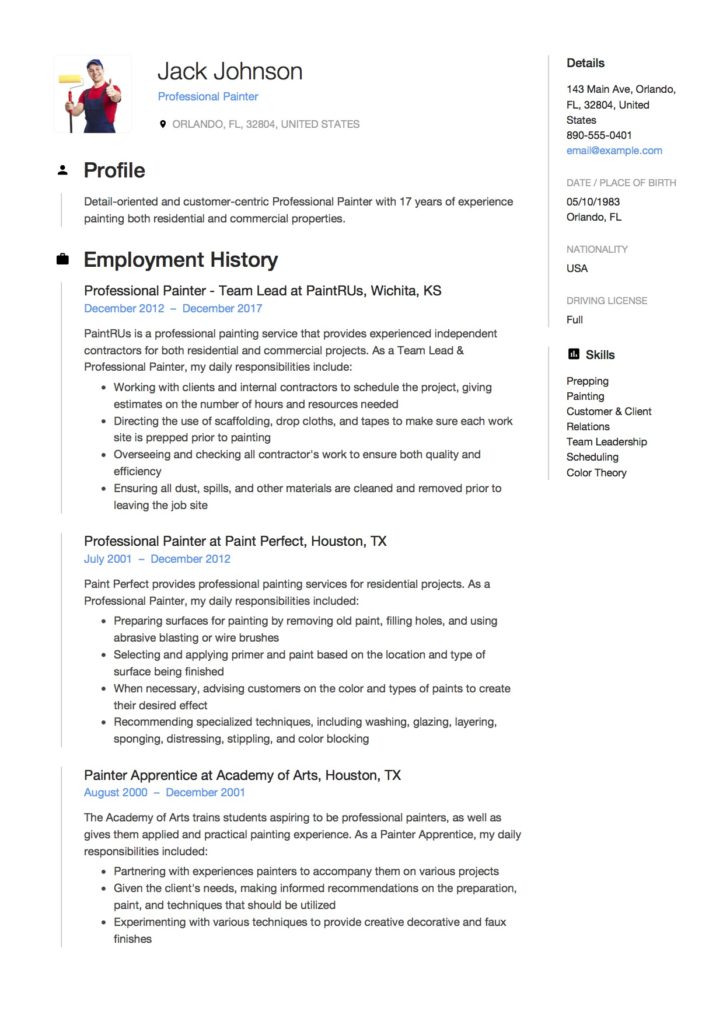
Resume – Commercial Painter-1.PDF
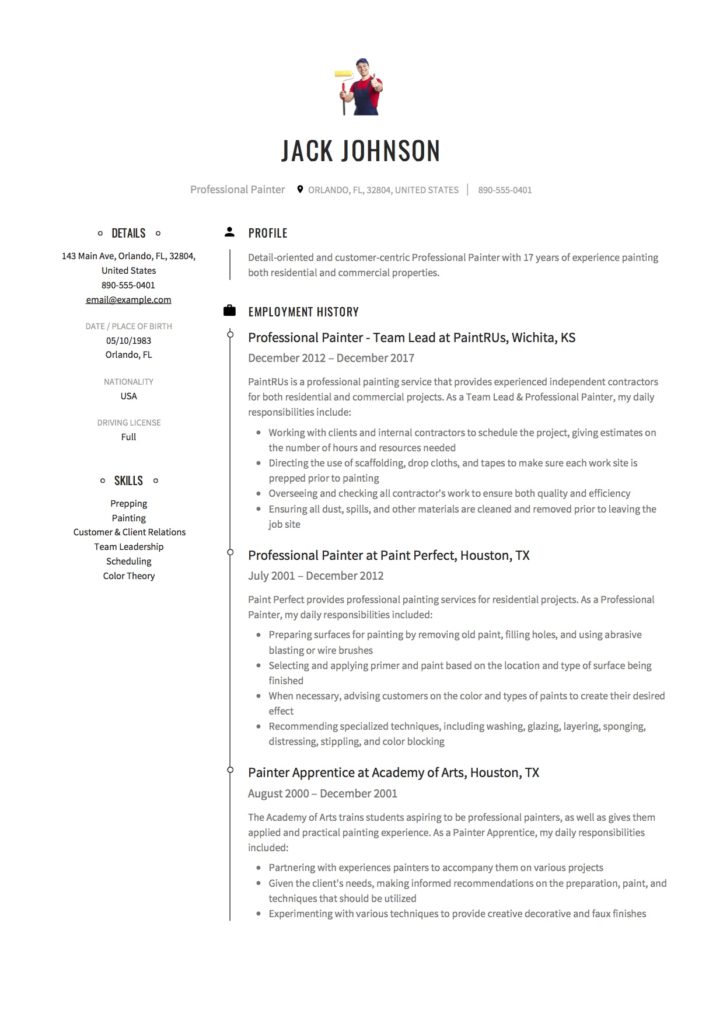
Resume – Commercial Painter-2.PDF
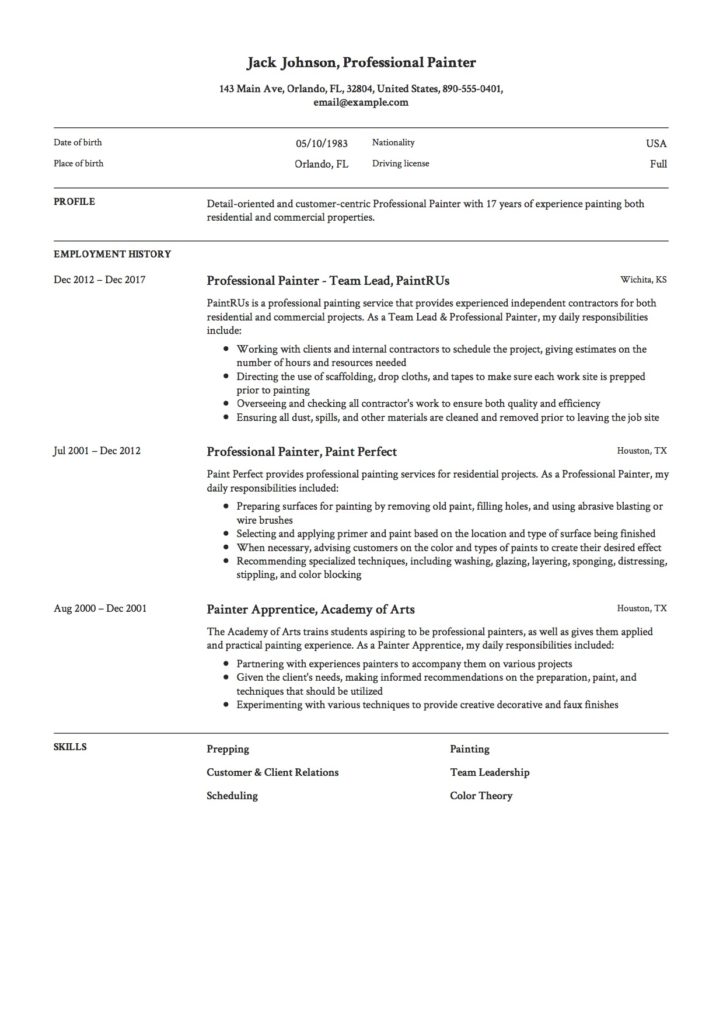
Resume – Commercial Painter-3.PDF
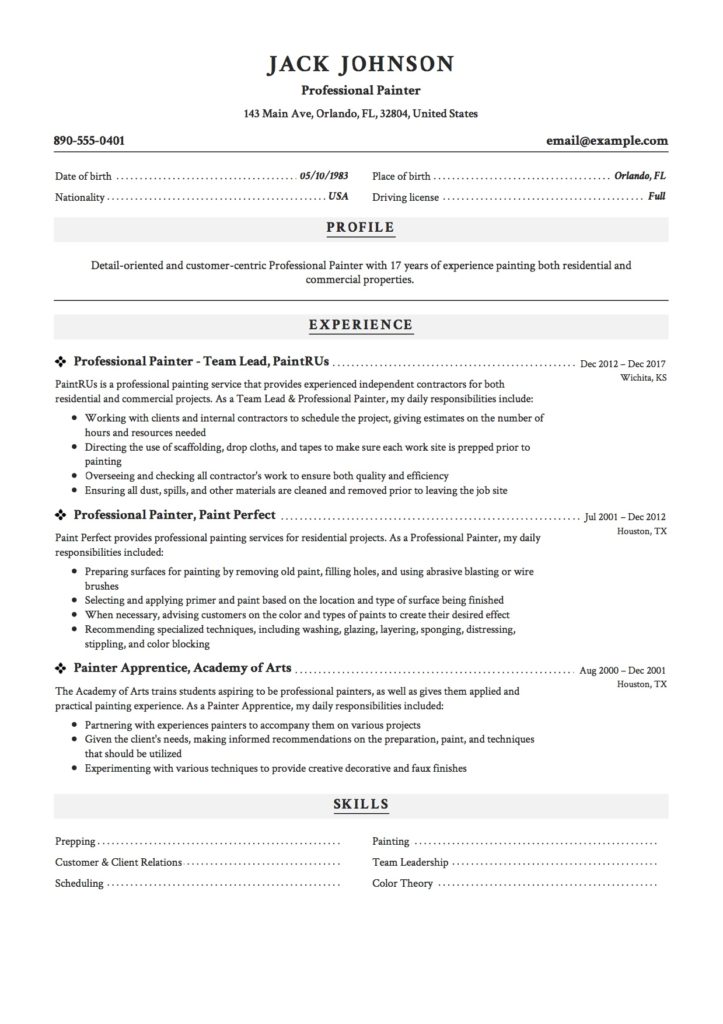
Resume – Commercial Painter-4.PDF
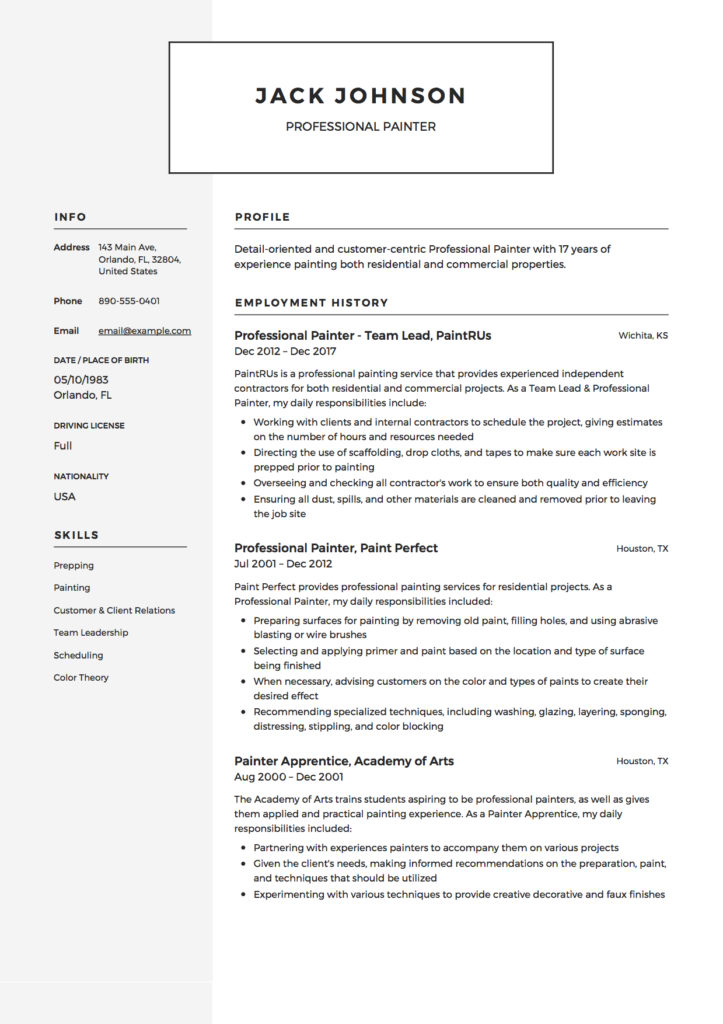
Resume – Commercial Painter-5.PDF
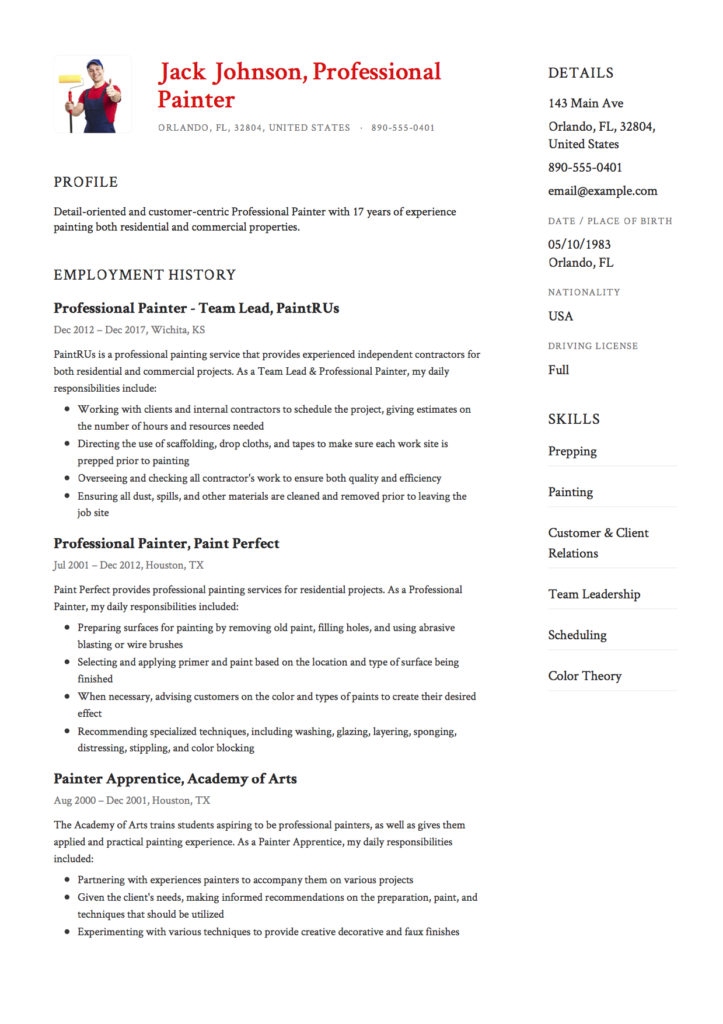
Resume – Commercial Painter-6.PDF
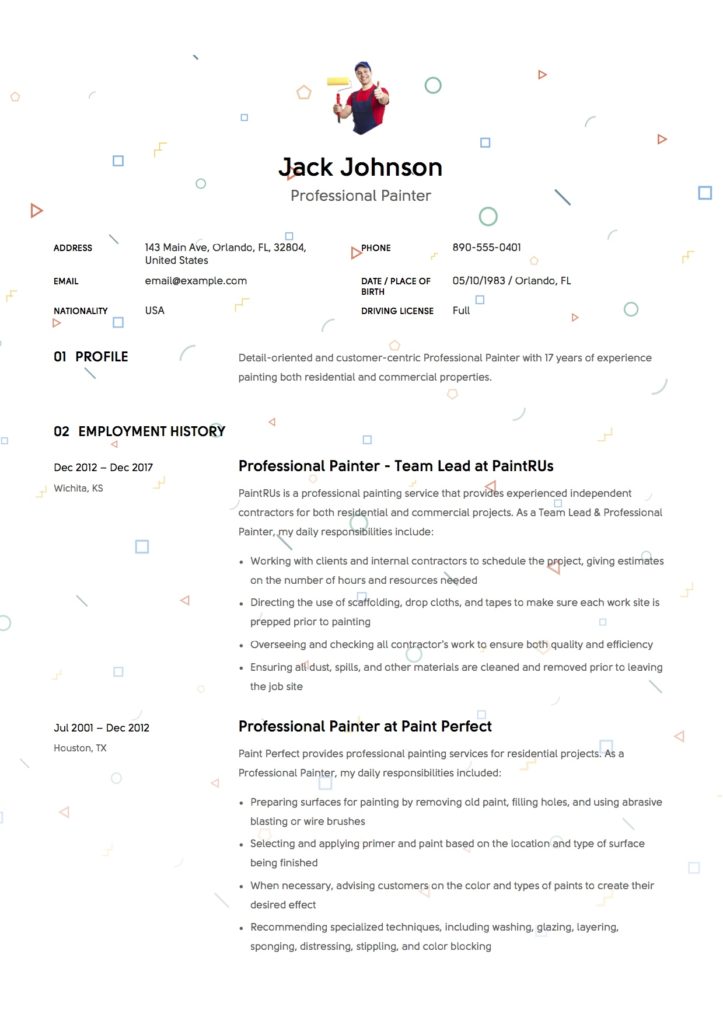
Resume – Commercial Painter-7.PDF
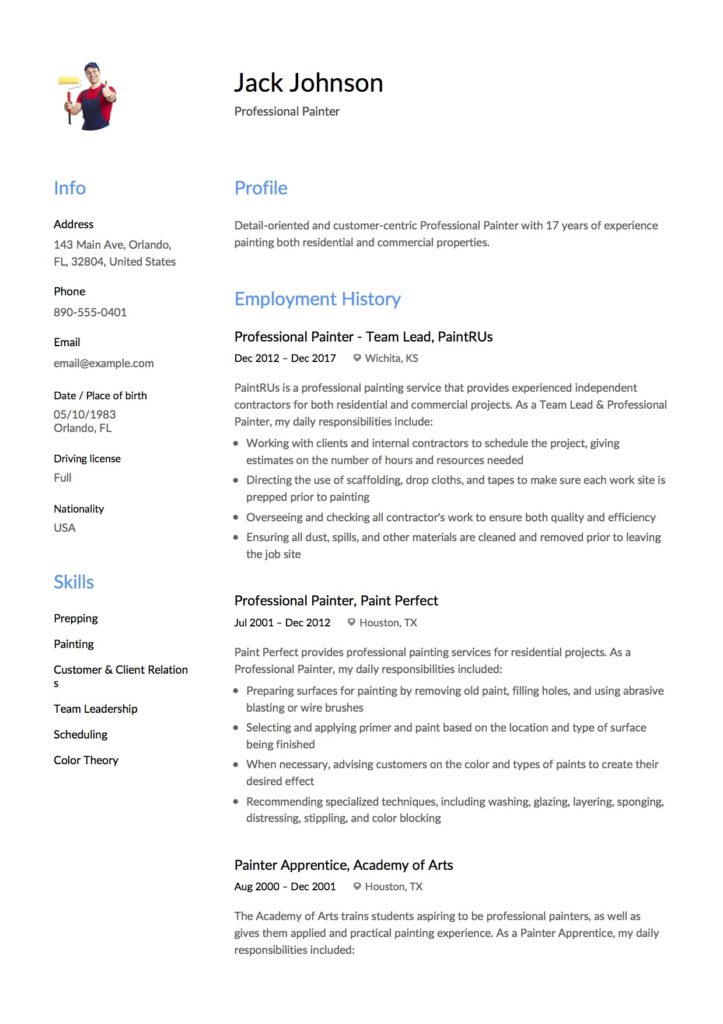
Resume – Commercial Painter-8.PDF
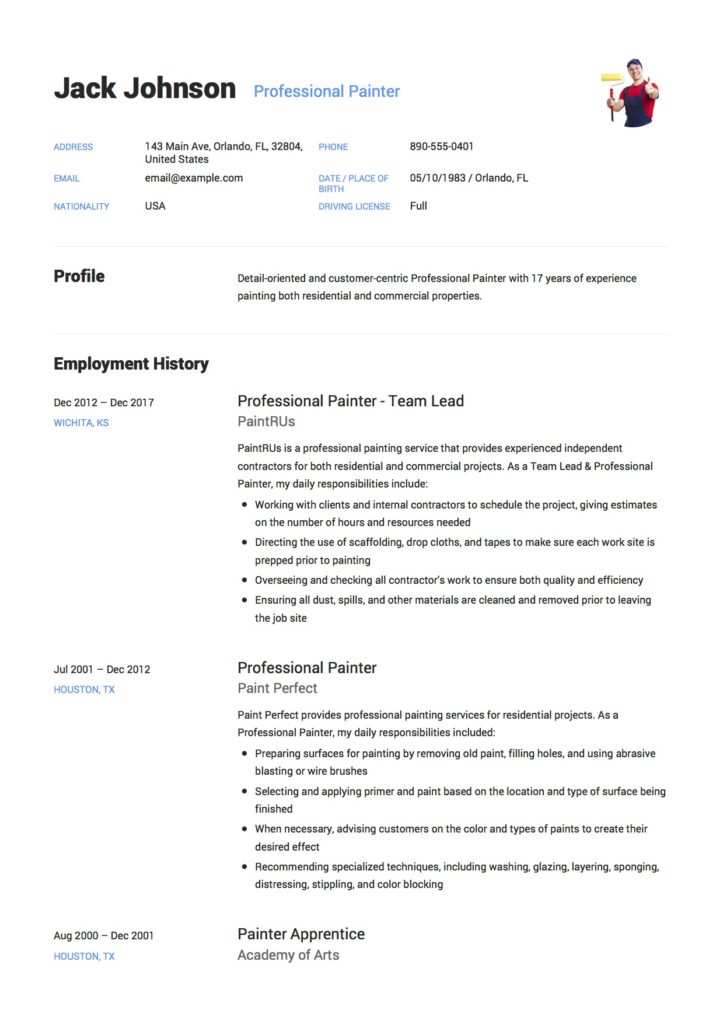
Resume – Commercial Painter-9.PDF
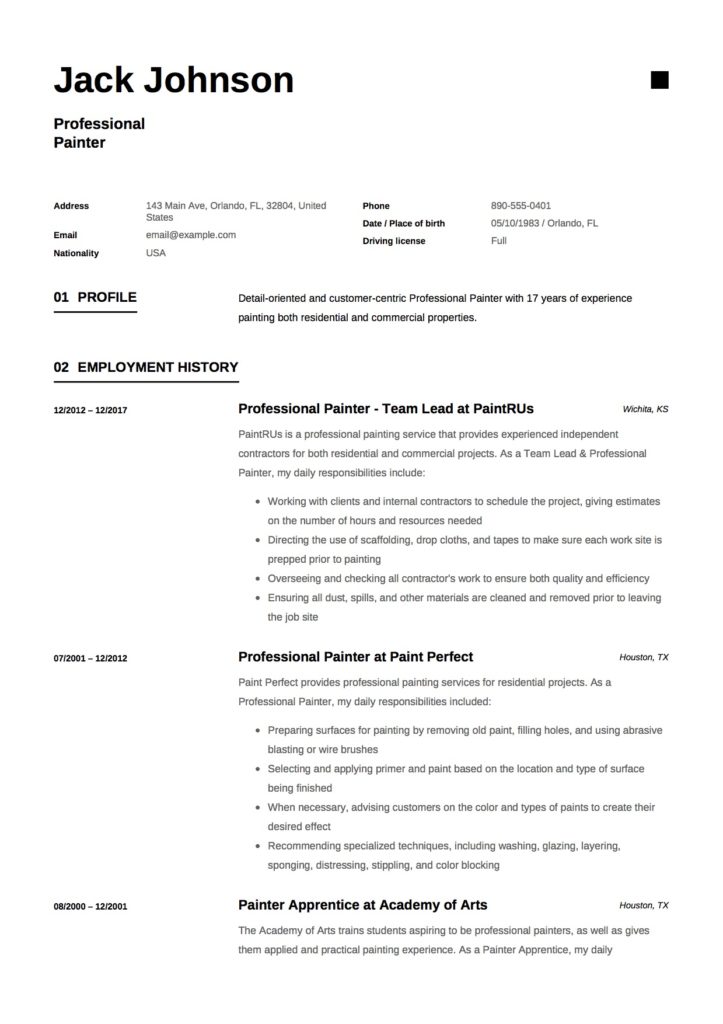
Resume – Commercial Painter-10.PDF
